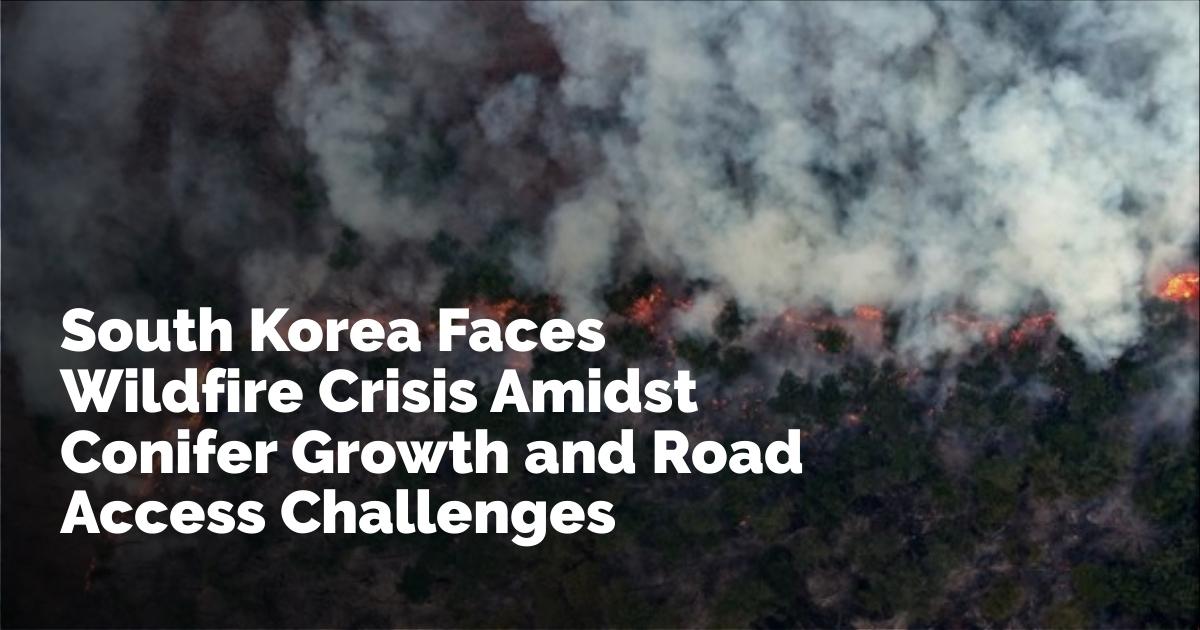South Korea is grappling with a severe wildfire crisis exacerbated by a combination of factors, including the abundance of flammable conifer trees and insufficient road access for firefighting efforts. These challenges have significantly hampered the ability of firefighters to effectively manage the blazes, leading to one of the most devastating wildfire incidents in the nation's history.
The Outbreak and Initial Response
On March 21, a series of wildfires erupted in Uiseong County, located in North Gyeongsang Province. This incident marked the beginning of what is being described as South Korea's worst wildfires on record. The rapid spread of the fires was further compounded by daunting environmental and logistical challenges, making containment efforts exceedingly difficult for emergency responders.
Environmental Challenges: The Role of Flammable Conifers
The proliferation of wildfires in South Korea can be partly attributed to the prevalence of flammable conifer trees within the national forest landscapes. These trees, while native to the region, are highly combustible, providing ample fuel for fires to thrive and spread rapidly. This intrinsic risk is amplified during certain climatic conditions such as dry spells, which South Korea has been experiencing more frequently in recent years.
Logistical Difficulties: Lack of Road Infrastructure
A significant hurdle in combating the wildfires has been the lack of adequate road infrastructure leading into forested areas. In many parts of the affected regions, there are insufficient roads to allow for the passage of fire trucks and other emergency vehicles. This infrastructural shortcoming severely restricts the ability of firefighters to reach the heart of the blazes swiftly and deliver necessary resources to mitigate the crisis effectively.
Firefighting Efforts Under Strain
Firefighters in South Korea are performing heroic work under incredibly challenging conditions; however, the scale and intensity of the wildfires have placed immense strain on resources and personnel. The combination of dense forests with limited access and the wind’s unpredictability have made firefighting efforts arduous and precarious.
The Impact of Climate Variability
Another layer to the crisis is the increasing impact of climate variability, which has led to more severe and prolonged dry seasons. These conditions have increased the susceptibility of forests to wildfires. As average temperatures rise and weather patterns shift, regions traditionally less prone to wildfires are now facing heightened risks, necessitating a reevaluation of current firefighting strategies and resource allocation.
Community and Environmental Impacts
The wildfires have not only posed a significant threat to South Korea's forests but have also disrupted the lives of local communities. Evacuations have been necessary for residents in the path of the fires, creating displacement and uncertainty for many. Moreover, the loss of forested areas threatens biodiversity and the ecological balance of these regions, which could have long-term implications on the environment.
Potential Solutions and Future Outlook
Addressing the wildfire crisis in South Korea requires a multifaceted approach that combines improved infrastructure, strategic forest management, and community engagement. Investing in the construction of roads and access points to remote forested areas is crucial for enhancing the responsiveness of firefighting teams. Additionally, revising land management policies to consider the removal or controlled reduction of flammable vegetation could mitigate fire risks.
Embracing modern firefighting technologies and strategies, such as the use of drones for surveillance and the deployment of advanced firefighting satellites, can also play a significant role in early detection and efficient response to fires.
Conclusion
South Korea's current wildfire crisis underscores the urgent need for comprehensive strategies to address the underlying causes and effects of wildfires. By understanding the role of environmental factors, such as flammable vegetation, and logistical barriers like road access, a more effective and responsive approach can be developed. Protecting communities, wildlife, and the natural heritage of South Korea will depend on swift and sustained action. Through continued investment in infrastructure and innovative firefighting strategies, South Korea can better prepare for and mitigate the impacts of future wildfire incidents.
출처 : Original Source

